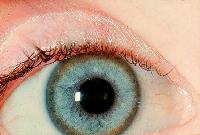|
This site is for people who are curious about Wilsons disease or for people who just want to help out! If you dont know what
Wilsons Disease is, then this is where we start.
What is Wilson's Disease?
Wilsons Disease is a genetic disorder that causes excessive copper accumulation in the liver or brain. The disease is
fatal unless it is detected and treated before serious illness from the copper poisoning develops.
What Causes Wilson's Disease?
Wilsons Disease is caused when the liver of a person who does not release copper into bile as it should. Bile is a liquid
produced by the liver that helps with digestion. As the intestines absorb copper from food, the copper builds up in the liver
and injures liver tissue.
Eventually, the damage causes the liver to release the copper directly into the bloodstream, which carries the copper
throughout the body. The copper buildup leads to damage in the kidneys, brain, and eyes. If not treated, Wilson's disease
can cause severe brain damage, liver failure, kidney failure and death.
How is Wilsons Disease Passed On/Inherited?
Wilson's Disease is an autosomal recessive disease, which means it is not sex-linked (it occurs equally in men and women).
Two abnormal genes are required to have the disease. At least one in 30,000 people of all races and nationalities has the
disease.
The responsible gene is located on chromosome 13. The gene is called ATP7B. Some cases of Wilson's Disease occur because
of spontaneous mutations in the gene, although most are transmitted from generation to generation.
What Are The Symptoms of Wilson's Disease?
These symptoms will usually appear between the ages of 6 and 20, but they can begin as late as age 40. The most distinctive
sign, Kayser-Fleischer, is when there is a rusty brown ring around the cornea of the eye. This can only be found out through
an eye exam.Symptoms Include:
- Jaundice
- Abdominal swelling and pain
- Vomiting of blood
- Tremors
- Difficulty walking, talking and swallowing.
- Fluid buildup in the lining of the abdomen
- Low platelet and white blood cell count in the blood
- High levels of amino acids, protein, uric acid, and carbohydrates in urine
- Softening of the bones
- Speech and language problems
- May develop all degrees of mental illness including homicidal or suicidal behavior, depression, and aggression.
- Women may have menstrual irregularities, absent periods, infertility, or multiple miscarriages.
How is Wilson's Disease Diagnosed? / What Tests Can be Done to Detect Wilsons Disease?
Wilson's disease is diagnosed through tests that measure the amount of copper in the blood, urine, and liver. An eye exam
would detect the brown ring around the cornea of the eye. Wilson's disease can be diagnosed through tests that measure the
amount of copper in the blood, urine, and the liver. Most of these signs can only be found by a doctor.
Can Wilson's Disease be Treated? Is it Fatal?
Yes, Wilson's Disease is a treatable condition. It is only fatal if not detected. If the disorder is detected early and
treated correctly, however, a person with Wilson's disease can enjoy completely normal health. With proper therapy, disease
progress can be slowed and the symptoms can be improved. The therapy for treatment must be lifelong; there is no actual cure.
Treatment is amied at removing the copper and preventing it from accumulating. It is treated with D-penicillamine or trientine
hydrochloride. Patients will also need to take vitamin B6 and follow a low-copper diet. A low-copper diet includes avoiding
mushrooms, nuts, chocolate, dried fruit, liver, and shellfish.
How Can I Help?
You can help by donating money to help find a cure for Wilsons Disease. Even if you do not know anyone, personally, with
this disease, you can still greatly help many people. You do not have to make a huge donation; even just a dollar is greatly
appreciated.

|

